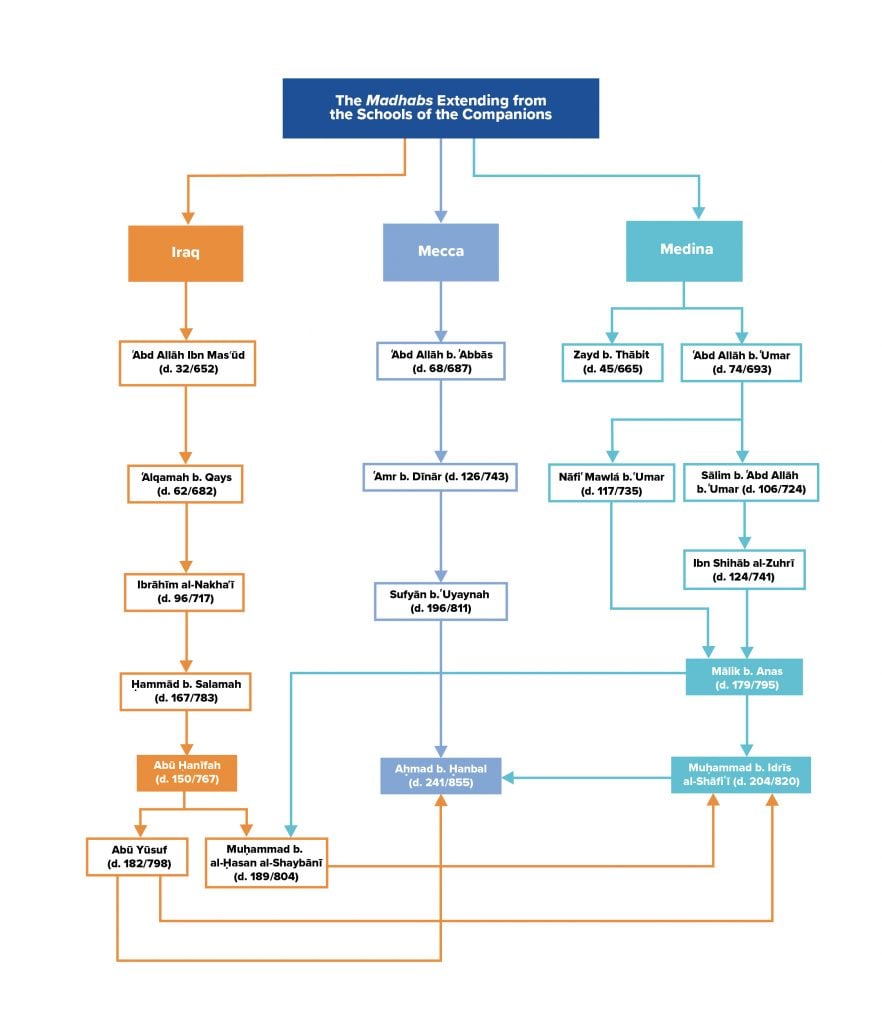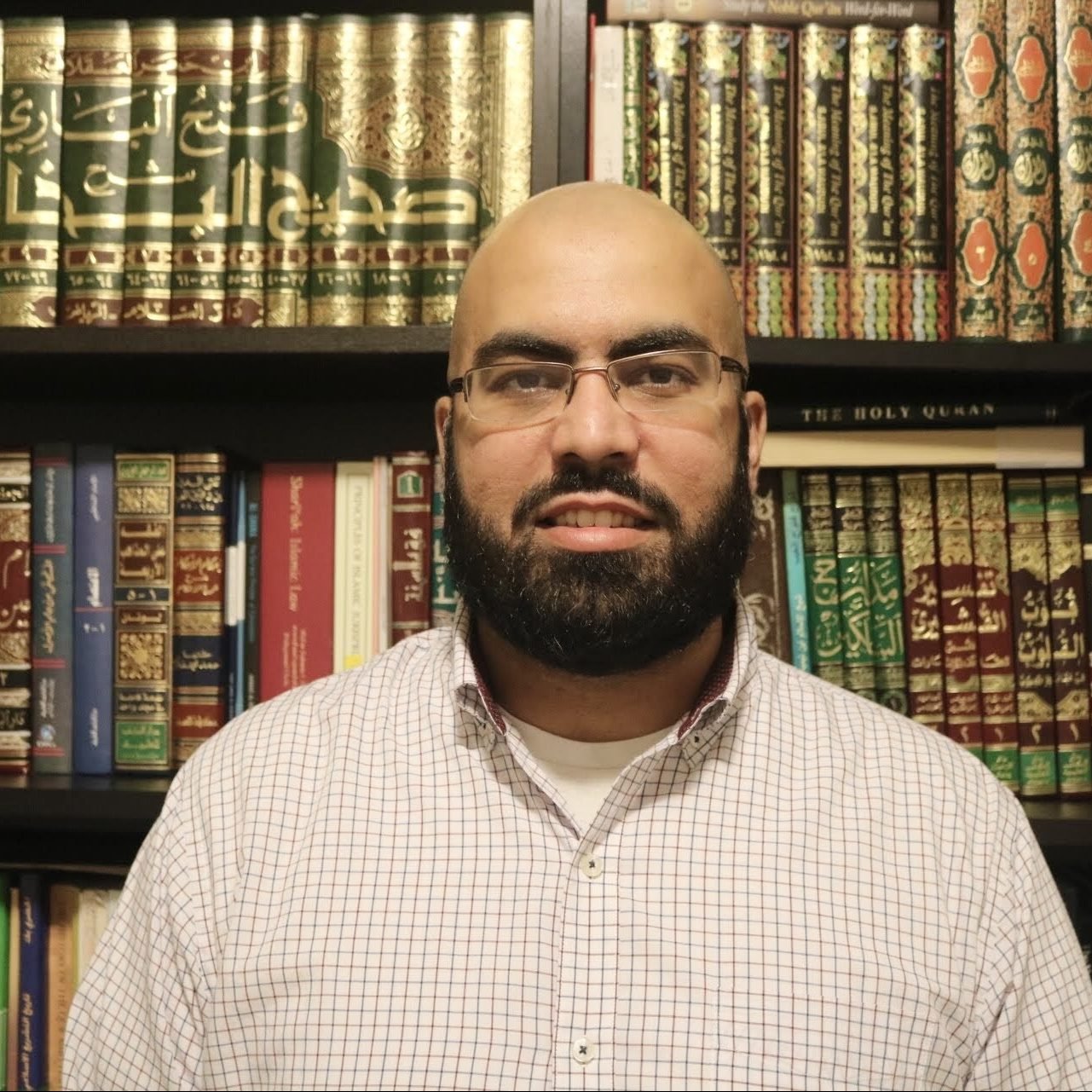God delivered His message to mankind using the medium of language. What does one do when such language is purposefully ambiguous? Is it possible to be completely literalist in the absolute sense? If one reads the word “stop” on an empty piece of paper it can have endless meanings. However, when one sees the word “stop” on a stop sign, it provides some context and the reader can eliminate other possible meanings. Does everyone need to stop everything they are doing? Or is there a specific context and group of people the stop sign is addressing? We go through an interpretive process to determine that a stop sign is addressing drivers and perhaps pedestrians, but not someone who is mowing their lawn or drinking coffee. Taking the word “stop” and stripping it of all context can lead to many bizarre conclusions. The meaning of the word “stop” on a stop sign is something we all agree has one particular and absolute meaning (qaṭʿī).
The Qur’an and Sunnah contain several examples of
qaṭʿī texts. For example, the Qur’an states that fornicators, both male and female, are to be lashed one hundred times. The number is clear, it is one hundred, not more or less. It is also clear that both of them are to be lashed one hundred, it is not only one of the fornicators. However, how does one determine who a fornicator is? Is it someone who only looks with lust or is it the complete act of fornication? This is not as clear from the verse and requires other scriptural and contextual evidence to determine it. Scholars have determined this punishable form of fornication to be the actual act of penetration. In the absence of clear texts, any understanding of such a text would then be conjectural (
ẓannī), but nonetheless ample enough to be applied as law. Decisive knowledge (
qaṭʿī) is equated with certainty, to be unable to entertain any doubt concerning it (e.g., the meaning of a stop sign, or that lying is prohibited etc.). On the other hand, juristic opinion or
ẓann means that it is probable, but not certain. In other words, knowledge is correlated with certainty and opinion is correlated with probability. The vast majority of legal issues in Islam are
ẓannī and not
qaṭʿī, therefore allowing room for legal pluralism and flexibility. Conjecture, opinion, and probabilistic here do not mean a scholar’s guess, personal likes or dislikes, but it refers to them using their expertise to exercise their absolute best effort to properly interpret scripture. Muḥammad ʿAwwāma notes that if a scholar is a
mujtahid and recognized as such by other scholars, then following him is the layperson’s method of following scripture because a scholar’s opinion is not based on personal preferences, but a careful study of scripture.
[22] This does not mean that scholars are infallible, but it highlights that a scholar's expertise is primarily based on methodological considerations, not the interpretive result. Methodology matters in the determination of what constitutes a valid interpretation. What makes an opinion valid is the quality of the
ijtihād that takes place to arrive at a legal conclusion. Accordingly, the question of whether an opinion is correct misses the point. Because most legal opinions are based on
ẓannī texts, there is no way of determining their meanings with absolute certainty even if one believes that there is only one correct interpretation. The layperson is not completely absolved of responsibility in this process. They should have some premise on which they can distinguish between an actual researcher and an impostor. In this regard, the untrained must have a basis on which they can trust the
mujtahid. This trust is based on a relationship in which the layperson understands that the
mujtahid will act in the questioner’s best interest. It is similar to how one follows their doctor, the medical opinion is not based on his personal guess, but on trust in the doctor’s expert medical analysis.
God knows His words best. If God wished He could have revealed a book in which there was absolutely no ambiguity. The Qur’an explicates that parts of it are not clear:
It is He who has sent this Scripture down to you [Prophet]. Some of its verses are definite in meaning—these are the cornerstone of the scripture—and others are not entirely clear (Qur’an 3:7).
As previously noted, parts of the Qur’an are absolutely clear-cut or decisive (
qaṭʿī). These verses often consist of the core elements of faith. There is no doubt, or difference of opinion, about the fact that the Qur’an requires belief in only one God, a belief in all Messengers, a hereafter, prohibition of intoxication, adultery etc. These elements are often referred to as the foundations (
uṣūl) of the religion. The Shāfiʿī scholar Abū al-Maʿālī al-Juwaynī (d. 478/1085) explains that the foundational parts of religion are not open to interpretation because they comprise the core teachings of Islam in which differences of opinion are not allowed. Otherwise, Islam itself would not exist.
[23] It is for this reason that the
fiqh principle states that there is no room for
ijtihād in the presence of a definitive text (
lā masāgh lil ijtihād fī mawrid al-naṣṣ).
[24]If all laws were self-evident, there would be no need for interpretation because there would be nothing to interpret.
[25] The sources of law would need to be known with certainty. It is essential to know without a doubt that the Qur’an and Sunnah are authentic, but the legal conclusions drawn from them need not be more than probable, or more likely true than not. This is what is called preponderance of an opinion (
ghalabat al-ẓann or
al-ẓann al-rājiḥ) or, put simply, that which is most likely true.
[26] The Andalusian scholar Abū Isḥāq al-Shāṭibī (d. 790/1388) explains that rulings being based on probability is the norm in law.
[27] To give a simple example, if you enter your home and see that your spouse’s car is outside, their shoes are there, and there is noise in the house, you can come to the logical conclusion that they are home. This conclusion is
ghalabat al-ẓann in the sense that one uses evidence to come to a reasonable conclusion, but one that is still not certain beyond a shadow of a doubt because the family member has not been seen. In actuality a margin of error exists and there are other possibilities. A principle of Islamic jurisprudence states that “certainty is not removed by doubt” (
al-yaqīn lā yazūl bi-al-shakk). In the context of subsidiary law, all scholars agreed on the permissibility of acting on probability (
ẓann), without requiring certainty (
yaqīn) if the latter cannot be achieved. In most cases,
yaqīn cannot be achieved. When a jurist uses a
dalīl,
it indicates that a clear ruling (
ḥukm) is not present. The ruling is missing and a
dalīl points the jurist in the direction of the ruling. The jurist can be pointed in the right direction or make a mistake. When a jurist studies scripture, he studies the evidence (
dalīl) to come to a conclusion. A
dalīl is not proof, but it is evidence, indication, or pointing to a direction. Confusing evidence (a
dalīl) with proof (
ḥujjah) can often result in confusion. In law, evidence is used to build a case for proof. A lawyer may try to prove someone is guilty by compiling and examining evidence (witnesses, a glove at the crime scene, etc.). Oftentimes, one piece of evidence on its own is insufficient to establish a matter beyond doubt. When evidence is overwhelming, then the lawyer’s opinion is considered valid. The process of extracting laws from the Qur’an and Sunnah is not as simple as reading one piece of evidence (
dalīl). Rather it requires that one take all evidence from the vast landscape of Qur’an and hadith into consideration. Similar to the immense effort of a farmer, a
mujtahid literally means one who toils or puts forth immense effort to extract (
istikhrāj) the crop (in this case the legal ruling).
As noted earlier, the Qur’an mentions that some of its verses are ambiguous. In other words, God intentionally did not clarify these verses. These
ẓannī texts result in differences of opinion which are related to the branches or secondary elements (
furūʿ) of Islam. The Qur’an is a book that is meant to be applied in different times and circumstances.
Ẓannī texts allow legal flexibility that would otherwise not be possible had everything been spelled out in absolute detail with only one interpretation. This flexibility is completely necessary if a text is to be applied in different times, places, and cultures. Since the majority of scripture in legal matters are
ẓannī, it means that God has deliberately employed words that can be interpreted in more than one way, even though He could have used other words that would make the significance of the text unequivocal (
qaṭʿī). This illustrates that disagreement among scholars is not only inevitable but ordained by divine will. In other words, differences of opinion are an intentional and inherent part of Islamic law. Yet, these differences were not intended to cause division, but to help remove hardship. For instance, difference of opinion (
ikhtilāf)
can be utilized to accommodate different societal and individual needs.
[28] Ultimately, the Qur’an’s ambiguity in language is not an imperfection, but it rather enhances its value as a means of communication. The fact that it delivers multiple meanings in a single word or phrase allows Islamic law to adapt to different times and circumstances. However, as will be discussed later, there are boundaries to the validity of different interpretations.


